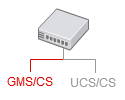Complete Task

|
POST /genesys/1/cs/services/${service_id}/tasks/${task_id}/end |
Description
This operation completes the task of a given type for the given service. The type is one of the enumerated values recorded for the corresponding business attribute. See Business Attributes in Context Services for further details.
- UCS assigns auto-incrementing identifiers to tasks, similar to the case of services and tasks.
- States and tasks are assigned 32-bit identifiers.
Operation
| ID | CV.WS.SRV.9 | ||
|---|---|---|---|
| Method | POST | ||
| URL | /genesys/1/cs/services/${service_id}/tasks/${task_id}/end | ||
| Field Name | Type | Mandatory | Description |
| URI Parameters | |||
| ${service_id} | integer | yes | The unique 64-bit ID of the service. |
| ${state_id} | integer | no | The unique 32-bit ID of the state. |
| ${task_id} | integer | yes | The unique 32-bit ID of the task. |
| Body: Task End Event<ref>This body contains fields from the Task End Event resource.</ref> | |||
| session_id | string | no | The ID of the related session, for instance, the orchestration session, or any other business session. |
| interaction_id | string | no | The ID of the related Genesys interaction. This ID can be used by other Genesys reporting products such as Stat Server, URS, Composer, and GVP. |
| application_type | long or string | no | The unique ID associated with the type or class<ref name="business">Refer to Configuration Options for more details on Business Attribute mapping.</ref> of application issuing the service event. May be used to group related applications, potentially across resource types. |
| application_id | integer | no | The unique ID (e.g. Genesys DB ID) for the application issuing the event, such as a GVP VoiceXML application or an Orchestration SCXML application. |
| resource_type | long or string | no | The unique ID associated with the type or class<ref name="business"/> of resource which provides the service (e.g. GVP, Agent Desktop, Orchestration). |
| resource_id | integer | no | The unique DB ID for the specific resource which provides the service. For instance:
|
| media_type | long or string | no | The media type<ref name="business"/> applicable to the given task, for instance, e-mail, voice, chat, etc. |
| disposition | long or string | no | The unique ID for the business disposition<ref name="business"/> assigned to the given service/state/task. For instance, this can be the DB ID of a Business Attribute used to enumerate a given organization’s business dispositions. |
| disposition_desc | string | no | The text description which provides additional context on the business disposition. |
| timestamp | date/time | no | The UTC time at which the service event was raised, with a precision of milliseconds, using the ISO 8601<ref name="iso8601">See http://en.wikipedia.org/wiki/ISO_8601</ref> representation : [YYYY]-[MM]-[DD]T[HH]:[mm]:[ss].[SSS]Z. Important If the application does not specify this timestamp, the server adds it when the service event is processed. |
| <extension key> | Any JSON type | no | Task attached data as key-value pairs. You can add as many key-value pairs as needed. |
<references />
Response
The Context Management Service API answers with HTTP codes for every request. The following table shows the correct response for a successful request. See HTTP Response Codes and Errors for further details on the possible codes that this operation can return.
| HTTP code | 204 |
|---|---|
| HTTP message | No Content |
Example
Operation
POST http://localhost:8080/genesys/1/cs/services/95/tasks/3/end
{
"interaction_id":0000CSS0FXZUP6UR,
"state_id":24,
"disposition": 10,
"disposition_desc": "SUCCESS",
"Survey":
{
"url":"http://ourServer/storage/userAnswers",
"question1":7,
"question2":true,
"question3":"will be better with cable tv and on-demand video"
},
"Proposal": [
{
"car type":"cabriolet",
"price":25 000,
"seats":2,
"comments":"200 cv, hardtop"
},
{
"car type":"S.U.V.",
"price":70 000,
"seats":8,
"comments":"4wd, leather seats"
}
]
}Result
204 No Content
This page was last edited on September 12, 2016, at 14:01.
Comments or questions about this documentation? Contact us for support!
